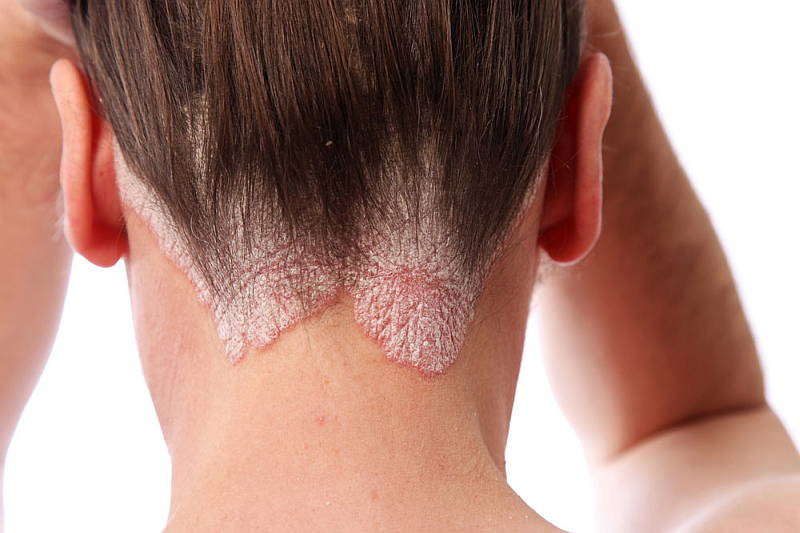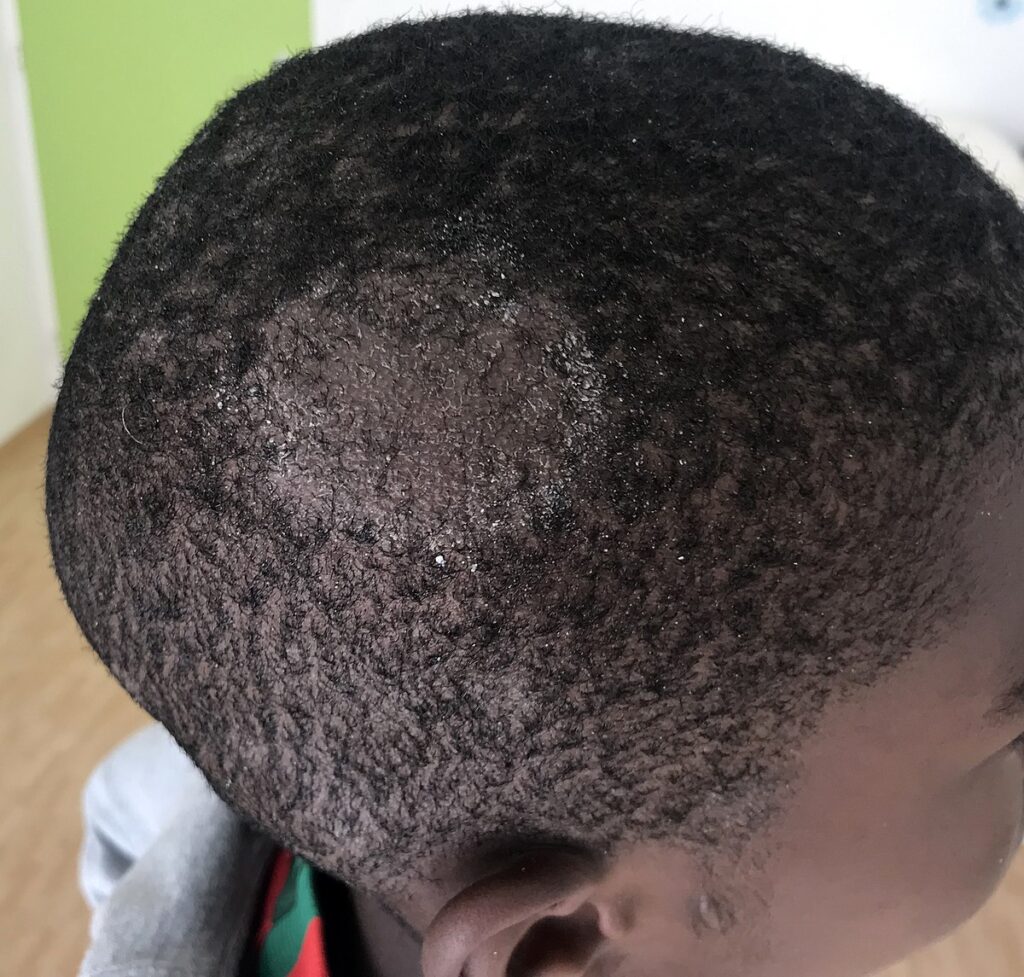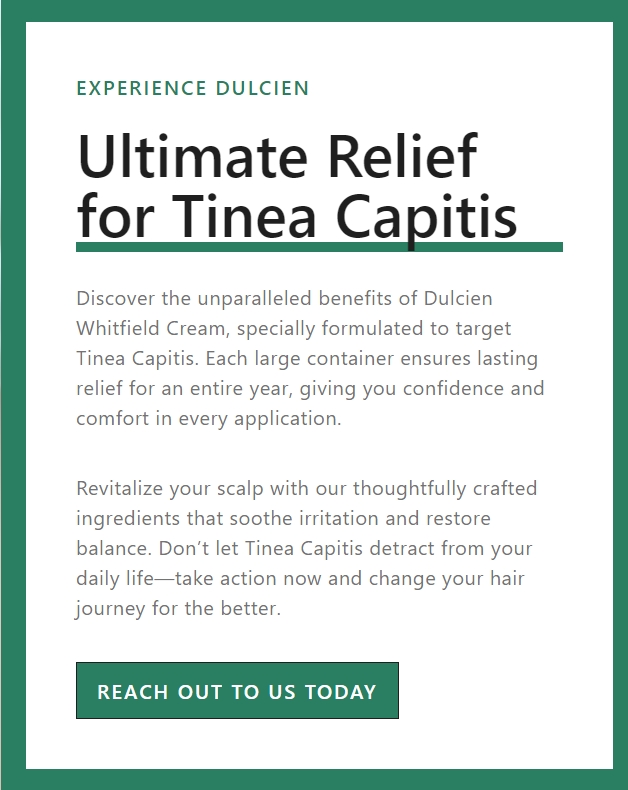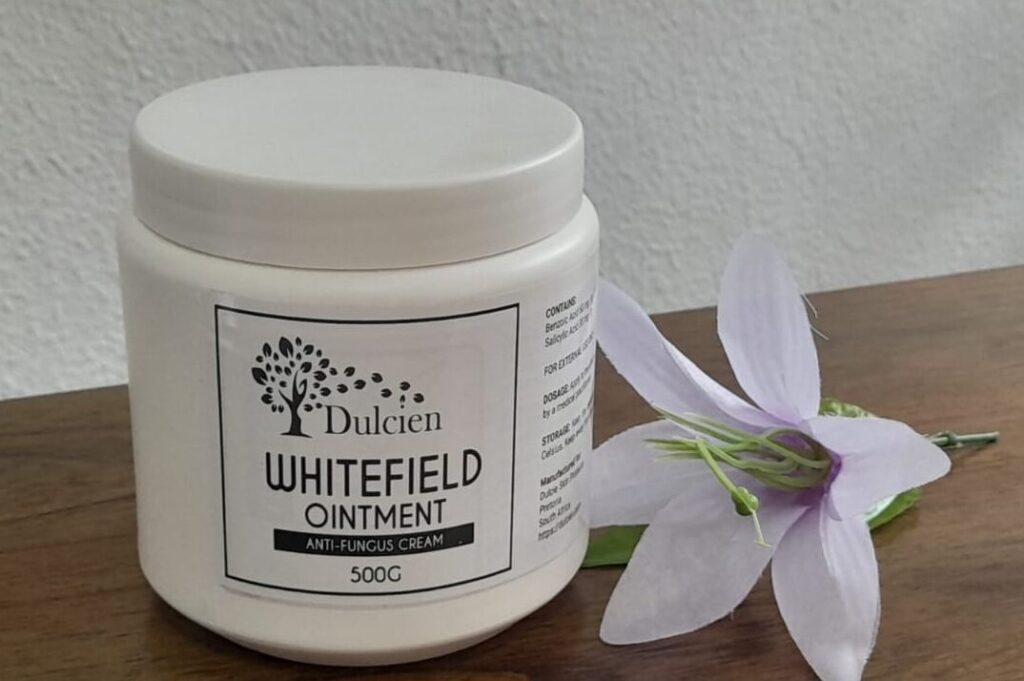Your cart is currently empty!
Conquer Ringworm of the Scalp (Tinea Capitis): Unleash the Secrets to Symptoms, Treatments, and Winning Solutions!
“Halt Ringworm of the Scalp (Tinea Capitis) Today: Act Fast to Decode Symptoms, Treatments, and Critical Solutions Before It Spreads!”
Imagine your child’s scalp, once smooth, now marred by patchy hair loss and itchy, scaly spots – annoying. This isn’t a nightmare; it’s the reality of Tinea Capitis, more commonly known as ringworm of the scalp.
The name might conjure images of squirming parasites. However, the culprit is far smaller, yet equally disruptive. They are dermatophytes. These are fungi that feast on keratin to grow. Keratin is a protein that helps form hair, nails and your skin’s outer layer .
This highly contagious condition, primarily affecting children but also impacting adults with compromised immunity, demands attention.
This article explores tinea capitis in detail. It highlights its symptoms and treatment avenues, which include both medical and home-based options. The article also identifies the visual cues that signal its presence.
We’ll also address the potential dangers of neglecting this infection.
Furthermore, we’ll spotlight Dulcien Whitfield Ointment Cream. We will explore its potential as a comprehensive solution. Firsthand accounts from those who’ve found relief will back this exploration.

What is Tinea Capitis?
Tinea Capitis is a dermatophyte infection caused by fungi like Trichophyton tonsurans (common globally) or Microsporum species. These fungi invade the hair shafts and scalp, leading to a range of symptoms from mild scaling to severe inflammation.
Dermatophytes are a type of fungi. They cause superficial infections of the skin, hair, and nails. They require keratin (a protein found in hair – helps hair grow) for growth and survival. They are commonly spread through direct contact with infected people, animals, or contaminated objects.
The infection (Tinea Capitis) spreads through direct contact with an infected person. It can also spread through contact with an infected animal like cats or dogs.
Contaminated objects such as combs, hats, or pillows can also contribute to its spread. Warm, moist environments—think sweaty scalps or shared locker rooms—provide the perfect breeding ground for these fungi.
Children aged 3 to 14 are the most affected demographic due to close contact in schools or playgrounds. However, adults can contract it too. This is especially true if their immune defenses are compromised. Poor hygiene, overcrowding, and contact with infected pets further increase the risk.

Symptoms of Tinea Capitis
Tinea capitis manifests in various ways depending on the type of fungus and the individual’s immune response. Common symptoms include:
- Itchy, Scaly Patches: Small, red, scaly areas on the scalp that may resemble dandruff at first.
- Hair Loss: Circular bald patches where hair breaks off at or above the scalp surface. “Black dot” ringworm, caused by Trichophyton, leaves tiny black stubs where hair snaps off.
- Inflammation: Red, swollen areas that may ooze pus. In severe cases, kerions can develop. Kerions are painful, boggy masses that can lead to scarring.
- Dry, Flaky Scalp: A grayish, ashy appearance in “gray patch” ringworm, often caused by Microsporum.
- Swollen Lymph Nodes: Particularly at the back of the head or neck, signaling the body’s immune response.
In adults, symptoms might be subtler due to differences in scalp oiliness. Immune function varies as well. However, hair loss and itching remain telltale signs. Left unchecked, the infection can worsen, leading to complications we’ll discuss later.
Identifying Ringworm on the Scalp
Visual identification is key to understanding tinea capitis. While I can’t provide actual images, here’s what you’d typically see:
- Black Dot Ringworm: Small, circular bald spots dotted with black stubble where hair has broken off at the scalp.
- Gray Patch Ringworm: Ashy, scaly patches with short hair stubs, often less inflamed than other types.
- Kerion: Raised, pus-filled, crusty swellings that look angry and red, sometimes mistaken for bacterial infections.
- Diffuse Scaling: Widespread flaking resembling severe dandruff, with patchy hair thinning.
For real-world examples, a quick web search for “tinea capitis photos” or a visit to medical sites like DermNetNZ.org can offer vivid illustrations. These visuals underscore why early diagnosis is critical.
Tinea Capitis in Adults
Though less common, tinea capitis in adults often affects those with weakened immunity—think diabetes, HIV, or chemotherapy patients.
Unlike children, adults do not show dramatic hair loss but experience persistent itching, scaling, or subtle bald spots.
The infection may also spread to facial hair (tinea barbae) in men. Adults in close contact with infected children or pets are at higher risk, making vigilance key.
Standard Scalp Ringworm Treatment
Treating tinea capitis requires a two-pronged approach: oral antifungals to kill the fungus deep within hair follicles and topical aids to limit spread. Unlike ringworm on the body, topical creams alone won’t suffice for scalp infections due to the depth of fungal penetration.
Medical Treatments
- Oral Antifungals:
- Griseofulvin: A mainstay for children, taken for 6–8 weeks with fatty foods (like ice cream) to boost absorption. Side effects include upset stomach or diarrhea.
- Terbinafine (Lamisil): Effective in shorter courses (4–6 weeks), with fewer dietary restrictions but potential liver concerns in adults.
- Itraconazole or Fluconazole: Alternatives for resistant cases or allergies.
- Medicated Shampoos: Selenium sulfide shampoos, used 2–3 times weekly, reduce fungal spores and prevent transmission but don’t cure the infection alone.
Treatment duration varies, but hair regrowth signals success, typically within months post-therapy. Doctors may confirm clearance with a fungal culture.

Fastest Way to Get Rid of Ringworm on the Scalp
Speed hinges on early intervention. Begin oral antifungals within days of symptom onset. Pair this with diligent shampoo use. This can shorten the infection’s lifespan to 4–6 weeks. Consistency is crucial—stopping meds prematurely invites recurrence. For severe kerions, oral steroids might accelerate healing by curbing inflammation, though this doesn’t replace antifungals.

Ringworm on Scalp Treatment at Home
While home remedies can’t replace prescription drugs, they can support recovery and ease symptoms:
- Tea Tree Oil: Diluted with a carrier oil (like coconut), its antifungal properties may soothe itching. Apply sparingly to affected areas.
- Apple Cider Vinegar: A diluted rinse (1:3 with water) might inhibit fungal growth, though evidence is anecdotal. Avoid if the scalp is broken or inflamed.
- Coconut Oil: Its lauric acid has mild antifungal effects; use as a moisturizer to reduce scaling.
- Garlic Paste: Crushed garlic mixed with honey, applied briefly, has antifungal potential but risks irritation.
- Hygiene: Wash bedding, hats, and combs in hot water with bleach to kill spores. Avoid sharing personal items.
These methods complement medical treatment, not substitute it. Consult a doctor before relying solely on home care.
What Happens if Tinea Capitis is Left Untreated?
Ignoring tinea capitis can lead to serious consequences:
- Permanent Hair Loss: Kerions or chronic inflammation scar follicles, halting regrowth.
- Scarring: Crusty, untreated patches become fibrotic, leaving smooth, bald areas.
- Spread: The infection can jump to other body parts or people, escalating the outbreak.
- Secondary Infections: Open sores invite bacteria, complicating treatment with antibiotics.
- Systemic Issues: Rarely, in immuno compromised individuals, fungi may invade deeper tissues.
Early action prevents these outcomes, underscoring the need for prompt care.
Dulcien Whitfield Ointment Cream: The Ultimate Solution?
Enter Dulcien Whitfield Ointment Cream, marketed as a game-changer for Tinea Capitis. Available in large containers, it promises to eradicate all fungal traces with a potent, broad-spectrum anti-fungal formula. Its generous sizing ensures prolonged use, ideal for stubborn cases.
Say goodbye to the relentless itching. Say farewell to unsightly patches and the embarrassment of Tinea Capitis – Head Ringworm.
Dulcien Whitfield Cream is the ultimate weapon against head ringworm! This powerhouse cream doesn’t just work. It obliterates the fungus with unmatched effectiveness. Your scalp is restored to its healthy, confident glory in no time.
Here’s the kicker: it comes in massive containers that scream value. With one buy, you’re armed to the teeth until every last trace of that pesky fungus is history. Why waste time and money on half-baked solutions when Dulcien Whitfield Cream delivers the knockout punch you need?
Act now, grab yours today, and reclaim your life from ringworm’s grip—because you deserve nothing less than total victory!

Testimonials for Dulcien Whitfield Ointment Cream
- Sarah M., 34, Mother of Two: “My kids caught ringworm at school, and the itching was unbearable. Dulcien Whitfield cleared the scaling in a week alongside their pills. The big tub lasted us through the whole ordeal—no recurrence!”
- James T., 42, Construction Worker: “I got tinea capitis from a sweaty helmet. This cream stopped the spread fast, and my hair’s growing back. Worth every penny for the huge container.”
- Aisha K., 29, Nurse: “As an adult with a weak immune system, ringworm hit me hard. Dulcien Whitfield soothed my scalp while the meds worked. It’s a lifesaver in bulk!”
- Liam P., 10, Student: “My bald spots were embarrassing, but this cream made them less itchy quick. Mom says it’s the best because it lasts so long.”
- Maria G., 60, Retiree: “I didn’t expect ringworm at my age, but Dulcien Whitfield tackled it. The big jar meant I could keep applying it, and my scalp’s clear now.”
These testimonials highlight the cream’s role as a supportive powerhouse, though independent studies on its efficacy are lacking. Pair it with prescribed antifungals for optimal results.
History of Whitfield Ointment Cream
Whitfield Ointment is named after a British Dermatologist, Professor Arthur Whitfield. He first used it on fungal infections in early 1908. It is made of Salicylic acid that is keratolytic agent, meaning it helps shed dead skin cells.
It also includes Benzoic acid that has effective anti-fungal and antiseptic properties.
This has been the go-to product for fungal infections since the early 20th century. Its efficacy endures to this day.
Dulcien Whitfield Ointment is based on this enduring formula and it works like a charm.
Improvement after applying Whitfield Ointment is expected within a week and a cure is expected within a month. But, you are encouraged to keep using to ensure all traces of the fungus are killed for keeps.
How Do I Prevent a Re-Infection of a Skin Fungal Disease
Preventing fungal reinfection involves a combination of good hygiene practices and addressing environmental factors that contribute to fungal growth. Here’s a breakdown of key strategies:
Hygiene Practices:
- Keep Skin Clean and Dry:
- Fungi thrive in warm, moist environments. Thoroughly dry your skin, especially in areas like between your toes, skin folds, and the groin area, after showering or bathing.
- Change sweaty clothes promptly, especially socks and underwear.
- Foot Care:
- If you’ve had athlete’s foot, pay extra attention to your feet.
- Wear breathable shoes and socks made of cotton or moisture-wicking materials.
- Avoid walking barefoot in public areas like locker rooms, showers, and swimming pools. Wear flip-flops or shower shoes.
- Dry your feet thoroughly after washing, and consider using anti-fungal foot powder.
- Nail Care:
- Keep your nails trimmed short and clean.
- If you’ve had a nail fungus, disinfect nail clippers regularly.
- Personal Items:
- Avoid sharing personal items like towels, clothing, and shoes.
- Wash towels and bedding frequently in hot water.
Environmental Factors:
- Shoes and Clothing:
- Allow shoes to air out completely between wearings.
- Consider using antifungal shoe sprays or powders.
- Wash clothing, especially socks and underwear, in hot water to kill fungal spores.
- Home Environment:
- Keep your bathroom and other damp areas clean and well-ventilated.
- Regularly clean surfaces that may come into contact with fungi, such as shower floors and mats.
- Public Places:
- Be cautious in public areas where fungi are common, such as gyms, pools, and locker rooms.
Additional Considerations:
- Complete Treatment:
- Ensure you complete the full course of anti-fungal medication, even if symptoms improve. This helps prevent the fungus from returning. That is Dulcien Whitfield Ointment Creams are big. This is a win. You continue using even after you are cured to ensure all traces of the fungus are killed for keeps.
- Immune System:
- A healthy immune system helps fight off infections. Maintain a balanced diet, get enough sleep, and manage stress.
- Underlying Conditions:
- If you have conditions like diabetes, which can increase your risk of fungal infections, manage them effectively.
- Consult a Doctor:
- If you experience recurrent fungal infections, consult a doctor. They can help identify any underlying factors and recommend appropriate preventive measures.
By consistently following these preventive measures, you can significantly reduce your risk of fungal reinfection.
Conclusion
Tinea Capitis, or ringworm of the scalp, is a persistent fungal foe that demands swift, thorough treatment. From itchy patches to bald spots, its symptoms disrupt daily life, especially if untreated, risking permanent damage.
Dulcien Whitfield Ointment Cream emerges as a promising ally, its large containers ensuring comprehensive care. Whether you’re a parent, an adult patient, or a caregiver, you should understand Tinea Capitis. Addressing it promptly can efficiently restore scalps and peace of mind.

Search
Categories
Latest Post
- Natural Eczema Relief: Soothe Sensitive Skin with Dulcien Whitfield Ointment
- The Best Antifungal Creams for Private Areas: Spotlight on Dulcien Whitfield Ointment Cream
- Understanding Eczema: Causes, Symptoms, and Effective Treatment with Dulcien Whitfield Ointment Cream
Disclaimer
This is for informational purposes only. For medical advice or diagnosis, consult a professional.